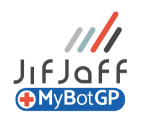Automation in Primary Care: A New Age of Efficiency and Security
The NHS is continually embracing innovation, exploring new technologies to streamline processes and enhance patient care. Automation within primary care is a pathway that holds the promise of revolutionising how clinicians and practice staff operate, liberating valuable time and cutting costs. But how does this automation work? Is it secure? And how do we monitor its activities? Let’s delve into it.
How Do Automation Primary Care Products Work?
Automation in primary care functions much like an unseen assistant. It employs specific login credentials for EMIS or SystmOne, operating within the system as a distinct entity. This automated “entity” can carry out numerous tasks based on preset practice-driven rules, assisting clinicians and administrative teams in their daily tasks.
Think about the countless hours spent on tasks like blood filing, repeat prescriptions, recalls (LTC), health checks, and more. The automation system can perform these roles around the clock with precision, adhering to the rules defined by the practice. All its actions are logged, ensuring transparency and accountability.
Where Do They Reside?
These automated systems reside within your practice’s existing platforms, seamlessly integrating with your systems—possibly even at your practice! They can execute tasks such as searching, reading, and writing, following strict guidelines and filtering their capabilities. They function much like a human team member, only quicker and without fatigue.
Are They Secure?
Security is paramount within the NHS, especially when handling patient data. Automation primary care products are designed with this in mind, fully compliant with DPIA, SIA, and data sharing protocols. Every action is recorded in an audit log, providing a complete record of the system’s actions. This level of oversight ensures that the automation operates within the legal and ethical boundaries established by the practice.
How Do We Monitor Their Activities?
Monitoring and comprehending what the automation is doing is vital for maintaining control and transparency. With a comprehensive audit log, every action performed by the automation system is documented. This transparency fosters trust, guaranteeing that the automation stays within its designated boundaries, never straying out of line.
Furthermore, the automation is set up to pass on specific tasks or information to human team members when necessary. This handover process is governed by the rules defined by the practice, ensuring that human intervention is available when needed.
The Advantages: Time and Cost Efficiency
Beyond the technological marvel of automation, the practical benefits for primary care practices are significant. By supporting clinicians and administrative teams, automation allows more time for patient-focused care. The repetitive, time-consuming tasks are managed efficiently, reducing the workload and enabling more personalised attention to patients.
The financial aspect is equally compelling. Lower costs to achieve the same work translate to a more streamlined operation. Automation doesn’t take sick days or require holidays; it works behind the scenes, enabling the practice to flourish.
Embracing the Future
Automation in primary care is not a distant concept; it’s here now, offering a more effective and efficient approach to healthcare delivery. Understanding and implementing these systems can be a game-changer for NHS Primary Care clinicians and practice managers.
Automation can uphold the NHS’s mission to deliver top-tier care while cutting costs and administrative burdens, thanks to robust security measures, transparent logging, and adherence to practice-driven rules.
Automation in primary care is a thrilling frontier. It’s time to explore how it can benefit your practice and patients.
JifJaff offers a fully managed and scalable solution for NHS Primary Care. Our team of experts handle all processes from implementation to maintenance, allowing you to focus on what matters most – your business! Our solution grows with you from practice, or large ICS with complex needs, we adapt to meet your requirements. With our comprehensive solutions, you can save time, reduce costs, and streamline your operations knowing you are fully supported.
